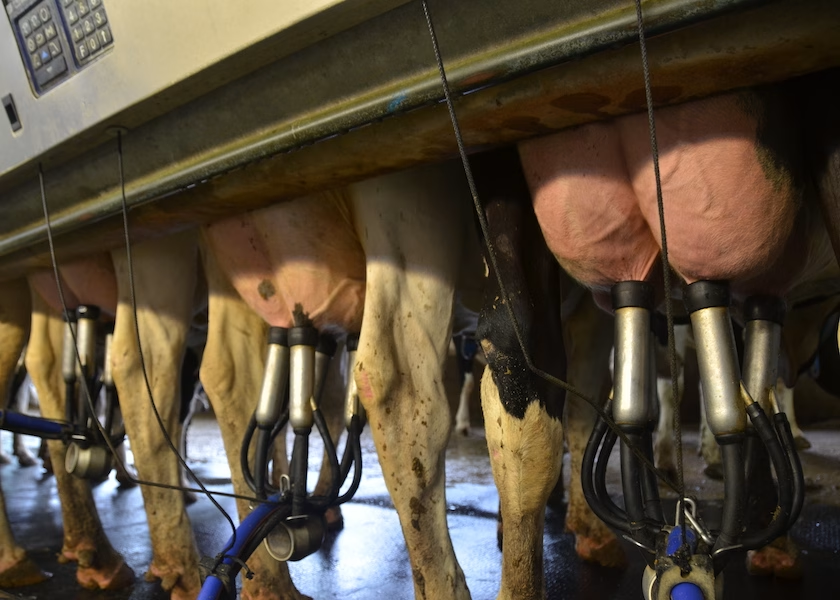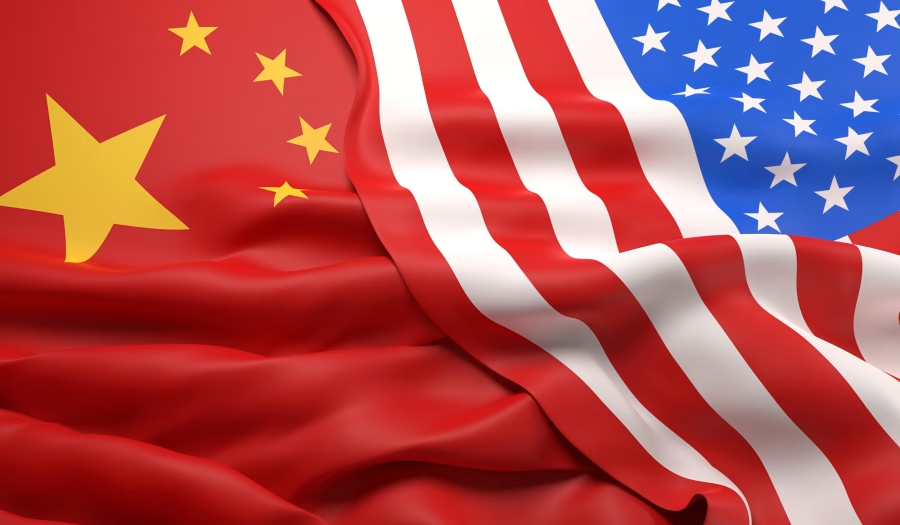Learn why US milk production is decreasing while butterfat and protein levels are increasing. How does this change affect dairy products and consumer choices? Find out more.

A persistent 11-month decline in U.S. milk production marks a pivotal shift in the dairy sector’s landscape. This latest drop of 0.9% in May stands in stark contrast to rising butterfat and protein levels, reaching unprecedented highs, underscoring a transformation within the industry. It’s evident that the emphasis must now transition from sheer milk volume to its quality and composition. Driven by consumer demand, this evolution highlights the substantial value of nutrient-rich dairy products. Between 2011 and 2023, butterfat pounds shipped from farms surged by 27.9% to 9.3 billion pounds, while milk production saw a comparatively modest rise of 15.4% to 226.4 billion pounds. These figures reflect a fundamental change in productivity benchmarks, illustrating that higher-content milk offers distinct financial and nutritional benefits.
Redefining Dairy Productivity: From Volume to Value
| Year | Milk Production (Billion Pounds) | Butterfat Production (Billion Pounds) |
|---|---|---|
| 2011 | 196.4 | 7.3 |
| 2012 | 200.3 | 7.5 |
| 2013 | 201.2 | 7.7 |
| 2014 | 206.0 | 8.0 |
| 2015 | 209.9 | 8.3 |
| 2016 | 212.4 | 8.5 |
| 2017 | 215.5 | 8.7 |
| 2018 | 217.5 | 8.8 |
| 2019 | 218.4 | 8.9 |
| 2020 | 223.1 | 9.0 |
| 2021 | 225.7 | 9.1 |
| 2022 | 226.0 | 9.2 |
| 2023 | 226.4 | 9.3 |
Since 1931, U.S. dairy productivity measures have revolved chiefly around milk output, determined by the USDA. Historically, this metric has offered a simple approach for evaluating performance over time and estimating production. Rising milk yields have shown developments in agricultural methods, herd management, and animal genetics, strengthening the dairy sector. However, since 2011, the makeup of milk has changed, which calls for a change in production guidelines. Butterfat and protein in milk have notably increased as customer tastes for nutrient-dense goods change. These are more significant than volume when gauging dairy quality and market worth. From 2011 to 2023, milk output rose by 15.4%; butterfat and protein production skyrocketed by 27.9%. This change emphasizes adjusting production values to fit consumer nutritional knowledge and market demand.
Recent Milk Production Trends: A Shift Towards Quality
| Month | Milk Production (billion pounds) | % Change from Previous Year |
|---|---|---|
| June 2022 | 18.0 | -0.5% |
| July 2022 | 18.2 | -0.4% |
| August 2022 | 18.1 | -0.6% |
| September 2022 | 17.8 | -0.7% |
| October 2022 | 18.0 | -0.3% |
| November 2022 | 17.9 | -0.4% |
| December 2022 | 17.7 | -0.5% |
| January 2023 | 18.1 | -0.6% |
| February 2023 | 17.5 | -0.8% |
| March 2023 | 18.3 | -0.9% |
| April 2023 | 17.9 | -0.7% |
| May 2023 | 18.0 | -0.9% |
Current milk production patterns highlight a dynamic change in the American dairy sector. This May’s 0.9% dip in milk output represents the eleventh straight month of losses. However, butterfat and protein output has risen for ten of the last eleven months. U.S. milk production statistics and butterfat and protein percentages from Federal Milk Marketing Orders (FMMO) help one determine this number. Although depooling and Idaho’s exclusion cause the metric to be imperfect, it emphasizes the trend toward higher-content milk. This change results in more nutrient-dense dairy products, indicating a fundamental shift from volume to quality in the dairy business.
Nutrient-Dense Evolution: Elevating Butterfat and Protein in Dairy Products
Higher butterfat and protein contents have significant market ramifications as the dairy sector adjusts to the changing milk composition. The move toward more nutrient-dense dairy products directly answers customer tastes for better, indulgent choices. Producers emphasizing quality over volume may demand more money for premium cheeses, yogurt, and other dairy products. Focusing on butterfat and protein may satisfy niche markets like high-protein diets and stimulate creativity by meeting the need for highly flavorful, nutrient-packed choices.
Nutrient-dense dairy products have emerged in line with more general market trends toward convenience and functional diets. Health-conscious customers look for products that effectively provide necessary nutrients in line with changing milk guidelines. Furthermore, the explosion in U.S. cheese exports shows the rising worldwide demand for premium dairy products. Driven by customer demand and economic incentives for producers to give milk composition priority, these market dynamics ultimately highlight a notable change in the dairy sector by stressing milk’s value and composition instead of pure output volume.
A Rollercoaster Start to 2023: Domestic and International Cheese Consumption Trends
| Month | Domestic Consumption (Million Pounds) | International Exports (Million Pounds) |
|---|---|---|
| January | 300 | 90 |
| February | 290 | 92 |
| March | 315 | 110.3 |
| April | 320 | 102 |
| May | 325 | 106 |
Domestic cheese consumption dropped early in 2023, dropping over 3.5% in January and February. By March and April, Americans turned around and started eating more cheese than in past years. Low cheese prices on the CME spot market helped to drive this recovery and significantly increase worldwide sales. Reaching a milestone, U.S. cheese exports for March for the first time topped 100 million pounds, up 20.5% yearly to the 110.3 million pound mark. With 102 million and 106 million pounds in exports, respectively, April and May followed this pattern; 40 million pounds were headed for Mexico.
Shifts in Dairy Cow Culling: Rethinking Herd Management and Market Strategy
| Year | Cattle Culling (Head) |
|---|---|
| 2019 | 3,500,000 |
| 2020 | 3,275,000 |
| 2021 | 3,000,000 |
| 2022 | 2,850,000 |
| 2023 (Through June) | 2,631,500 |
The U.S. dairy sector depends significantly on the noted dairy cow culling drop. Usually, dairy cow culling revitalizes herds by balancing productive and non-productive animals. Still, as of June 22, culling is down by 218,500 head from the previous year. This dramatic change deviates from the four-year trend. The growing beef-on-dairy market—which has produced between 3 million and 3.25 million animals from beef sires and dairy dams—is primarily responsible for this. Due to this tendency, dairy heifer replacements are scarce, which has driven their valuations beyond $3,000 at many auctions—a record high over two decades.
Aiming to improve meat production efficiency, the great demand for beef-on-dairy calves combines the robust features of beef cattle with dairy breeds. However, it influences herd dynamics by aggravating the replacement shortage and lowering the number of dairy heifers accessible to replace culled cows. With the almost three-year cycle from conception to the first calving, this shortage will take time. The future depends on how the sector responds to these developments and how they affect herd management and economic viability.
The Unrelenting Threat of HPAI: Navigating a Path Forward Amidst a National Challenge
Affecting at least a dozen states and compromising milk supply and herd health, Highly Pathogenic Avian Influenza (HPAI) still shadows the dairy sector. The two biggest dairy states, California and Wisconsin, have recorded no instances. However, dairy producers deal with lower milk output and difficulties controlling sick cows. Several businesses are working hard to address these challenges and provide vaccinations against HPAI in cattle. Emphasizing these initiatives, USDA Secretary Tom Vilsack has given optimism for future assistance. The dairy industry has to control the immediate effects of H5N1 using careful disease management techniques until vaccination is ready.
The Bottom Line
The business is moving from volume to rewarding highly nutritious milk components as we examine the evolving scene of dairy production. This reflects shifting customer tastes and market realities, requiring fresh production targets. Rising butterfat and protein levels indicate the possibility for additional value-added dairy products even though milk output dropped 11 months ago. Driven by competitive prices, trends also reveal growing worldwide demand for U.S. cheese. Apart from the continuous danger of Highly Pathogenic Avian Influenza and strategic herd management among limited culling, the dairy industry also suffers issues. Monitoring combined protein and butterfat output now offers a better standard for dairy output. Dairy producers and customers depend on a solid and sustainable future; hence, adopting these new productivity criteria and innovation is vital.
Key Takeaways:
- U.S. milk production has decreased for the 11th consecutive month as of May, showing a 0.9% drop.
- Despite declining milk volume, butterfat and protein production increased for 10 out of the past 11 months, indicating a shift in focus towards milk quality over quantity.
- Cow culling rates have decreased significantly, influenced by the beef-on-dairy market; dairy heifer replacements are at a 20-year low, pushing replacement values over $3,000.
- Highly Pathogenic Avian Influenza (HPAI) continues to impact dairy cows in multiple states, with ongoing efforts to develop a vaccine against this threat.
- U.S. cheese exports hit a record high, surpassing 100 million pounds in a single month for the first time in history.
Summary:
The decline in U.S. milk production has led to a shift in the dairy sector, with butterfat and protein levels reaching unprecedented highs. This highlights the importance of nutrient-rich dairy products and the need to transition from sheer milk volume to quality and composition. Between 2011 and 2023, butterfat pounds shipped from farms surged by 27.9% to 9.3 billion pounds, while milk production saw a modest rise of 15.4% to 226.4 billion pounds. The USDA’s milk output metric has been used since 1931 to evaluate performance over time and estimate production. From 2011 to 2023, milk output rose by 15.4%, while butterfat and protein production skyrocketed by 27.9%. Recent milk production trends show a dynamic change in the American dairy sector, with the 0.9% dip in May representing the eleventh straight month of losses. The growth of U.S. cheese exports highlights the rising worldwide demand for premium dairy products, driven by customer demand and economic incentives for producers to prioritize milk composition.












